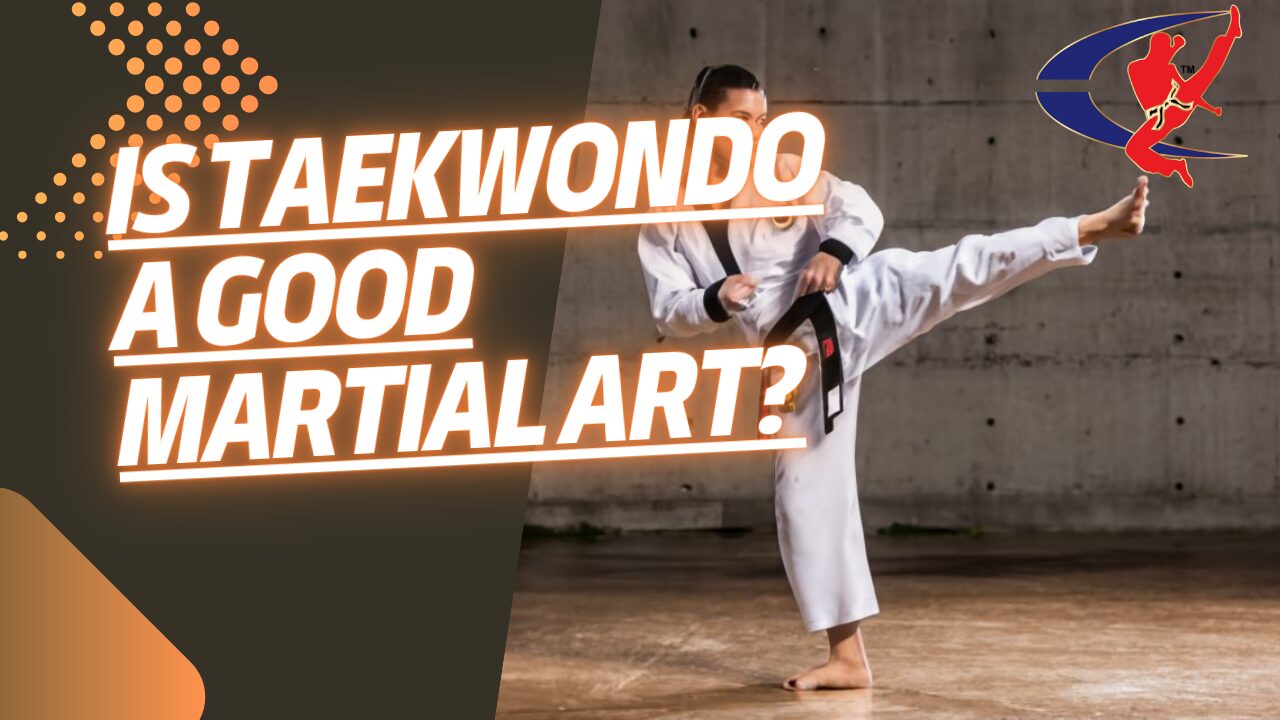Taekwondo, rooted in Korean martial arts traditions, offers a dynamic blend of combat techniques, mental discipline, and physical fitness. Its focus on precision kicks, mental focus, and sparring drills cultivates agility, strength, and self-defense skills. The art fosters sportsmanship, respect, and camaraderie among practitioners, promoting personal growth and resilience. While safety precautions are crucial due to its high-impact nature, Taekwondo can be empowering, enhancing confidence and well-being. If you seek a martial art that combines ancient wisdom with modern training methods to improve physical and mental resilience, Taekwondo may be the perfect fit for you.
Key Takeaways
- Taekwondo excels in dynamic kicks and precise techniques.
- It cultivates mental focus, agility, and self-discipline.
- Enhances physical fitness, strength, and self-defense skills.
- Promotes camaraderie, respect, and personal growth.
- Requires safety precautions for high-impact training and competition.
Origins of Taekwondo
The roots of Taekwondo can be traced back to ancient Korean martial arts practices that date back centuries. Korean influences are deeply embedded in the historical development of Taekwondo, shaping it into the dynamic and powerful martial art it is known as today. Originally developed as a means of self-defense, Taekwondo has evolved over time to encompass a blend of combat techniques, physical training, and mental discipline.
Historically, Taekwondo draws from various Korean martial arts forms, including Taekkyeon and Subak, which were practiced during the Three Kingdoms period from 57 BC to 668 AD. These ancient practices laid the foundation for what would later become Taekwondo, emphasizing speed, agility, and fluid movements. As Korea’s martial arts traditions continued to evolve, Taekwondo emerged as a distinct martial art with a focus on kicking techniques, striking, and sparring.
The rich tapestry of Korean influences woven into the historical development of Taekwondo highlights the cultural significance and heritage that define this martial art. Today, Taekwondo stands as a testament to Korea’s enduring legacy of martial arts excellence.
Techniques and Training in Taekwondo
Drawing from the deep well of Korean martial arts heritage, the techniques and training in Taekwondo embody a harmonious blend of precision, power, and discipline. Kicking techniques are a cornerstone of Taekwondo, with practitioners mastering a variety of dynamic and powerful kicks such as the roundhouse kick, side kick, and spinning hook kick. These techniques require not only physical strength but also mental focus and agility, making Taekwondo a holistic martial art form.
In Taekwondo training, sparring drills play a crucial role in honing combat skills and improving reaction time. Through controlled yet intense sparring sessions, practitioners learn how to apply their techniques in a dynamic and fast-paced environment, preparing them for real-life self-defense situations. Moreover, sparring drills foster sportsmanship, respect, and camaraderie among practitioners, creating a supportive and encouraging training atmosphere. By consistently practicing kicking techniques and engaging in sparring drills, Taekwondo students develop not only physical prowess but also mental fortitude and a deep sense of discipline.
Benefits of Practicing Taekwondo
Enhancing both physical fitness and mental well-being, the practice of Taekwondo offers a transformative journey towards self-improvement and personal growth. Taekwondo is renowned for its ability to improve physical fitness through rigorous training routines that enhance strength, flexibility, and cardiovascular endurance.
The mental discipline instilled through the practice of Taekwondo is invaluable, teaching practitioners focus, perseverance, and self-control.
In addition to physical and mental benefits, Taekwondo equips individuals with practical self-defense skills, empowering them to protect themselves in real-life situations. The confidence gained from mastering new techniques and overcoming challenges in Taekwondo training translates into improved self-esteem and a positive self-image that extends beyond the martial arts practice.
Moreover, the supportive community found in Taekwondo dojangs (training halls) fosters a sense of belonging and camaraderie among practitioners, creating a network of like-minded individuals who support each other’s growth. Overall, the holistic benefits of Taekwondo make it a rewarding martial art that contributes to both physical well-being and mental resilience.
Drawbacks to Consider in Taekwondo
When considering the practice of Taekwondo, it is crucial to acknowledge the potential drawbacks that individuals may encounter along their martial arts journey. While Taekwondo offers a multitude of benefits, such as improved physical fitness, mental discipline, and self-defense skills, there are certain aspects that warrant careful consideration.
One significant drawback to be mindful of in Taekwondo is the importance of safety precautions. Due to the dynamic and high-impact nature of this martial art, practitioners are at risk of injuries, particularly when sparring or performing complex techniques. It is essential for students and instructors alike to prioritize safety by using protective gear, practicing proper technique, and maintaining a respectful training environment.
Another challenge that individuals may face in Taekwondo is the competitive aspect of the sport. Competition challenges can range from intense pressure to perform well, to dealing with wins and losses gracefully. This aspect can be both mentally and emotionally demanding, requiring practitioners to develop resilience and sportsmanship to navigate the competitive landscape effectively.
Is Taekwondo Right for You?
Considering the array of physical, mental, and self-defense benefits it offers, evaluating whether Taekwondo aligns with your personal goals and aspirations is crucial. Taekwondo is not just a martial art; it is a path to personal growth and empowerment. If you are seeking to improve your physical fitness, mental discipline, and self-defense skills, Taekwondo could be the perfect fit for you.
Taekwondo provides a holistic approach to training, focusing not only on physical techniques but also on mental fortitude and emotional resilience. Through consistent practice, you can enhance your focus, self-discipline, and confidence, which are valuable attributes both inside and outside the training hall.
Moreover, Taekwondo equips you with essential self-defense skills that can help you feel more secure and prepared in today’s unpredictable world. By learning how to protect yourself and others, you are not only investing in your safety but also in your peace of mind.
Ultimately, if you are looking for a martial art that promotes personal growth, mental strength, and self-defense capabilities, Taekwondo may be the perfect choice for you.
Frequently Asked Questions
Can Practicing Taekwondo Help Improve My Mental Health and Focus?
Practicing Taekwondo can indeed enhance mental health and focus. Through disciplined training, practitioners experience improved focus, stress relief, and a sense of mental clarity. The combination of physical and mental aspects contributes to overall well-being.
Are There Any Age Restrictions for Starting to Learn Taekwondo?
When considering the age requirements for starting Taekwondo, it’s important to note that this martial art is accessible to individuals of various ages. While there may be some challenges, the benefits of learning Taekwondo are numerous and can positively impact individuals of all ages.
How Long Does It Typically Take to Earn a Black Belt in Taekwondo?
Earning a black belt in Taekwondo typically takes several years of dedicated practice and commitment. Belt progression is a symbolic representation of skill level, with each color requiring specific training intensity. Black belt requirements include rigorous testing processes to demonstrate mastery.
Is There a Risk of Injury When Practicing Taekwondo?
Preventing injuries is paramount in Taekwondo. Safety precautions like proper warm-up, supervised training, and protective gear reduce risks. Emphasizing technique over power, fostering discipline, and promoting respect contribute to a safe and enriching practice.
Are There Different Styles or Variations of Taekwondo That I Should Be Aware Of?
There are various styles of Taekwondo that practitioners should be aware of. Each style may emphasize different training techniques, sparring methods, belt ranking systems, and competition rules. Understanding these variations can enhance one’s martial arts journey.
Conclusion
In conclusion, Taekwondo is a martial art with deep roots in tradition and discipline. The techniques and training involved in Taekwondo offer numerous physical and mental benefits, making it a worthwhile practice for those seeking self-improvement and personal growth.
However, it is important to consider the potential drawbacks, such as the risk of injury and the time commitment required. Ultimately, whether Taekwondo is right for you depends on your goals, dedication, and willingness to embrace its challenges.

